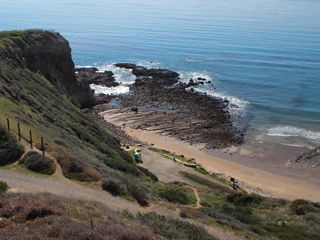
-
| 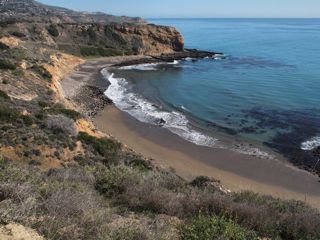
-
| 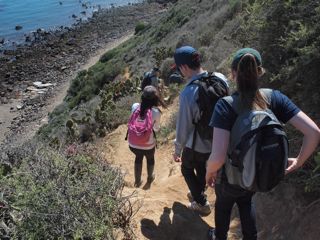
-
|
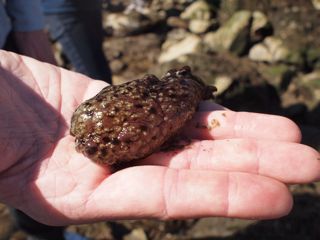
California sea hare juvenile (Alplysia califonnica)...
| 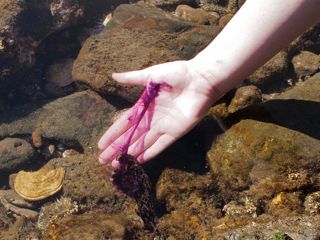
...was not too small to discharge its purple ink, as a defensive strategy. The sea hare's ink is derived
completely from red algae in its diet. Specifically, the pigment is phycoerythrobilin, the red algal photosynthetic pigment, r-phycoerythrin, minus its protein.
See Prince et al., 1998.
| 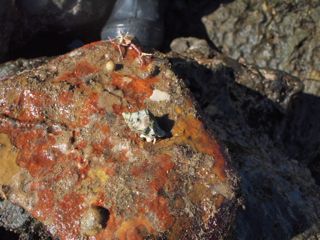
-
|
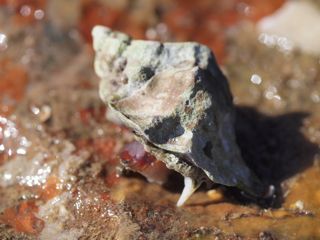
Nuttall's hornmouth (Ceratostoma nuttalli) but this one has an unusually large
tooth. We found a less eroded whitish one nearby.
| 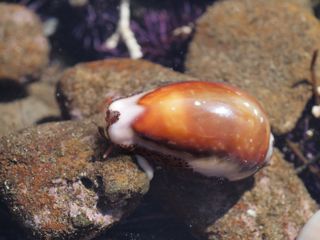
Chestnut cowrie (Zonaria spadicea)
| 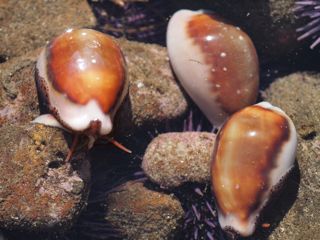
-
|
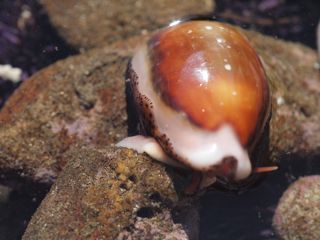
-
| 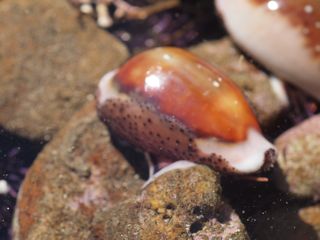
-
| 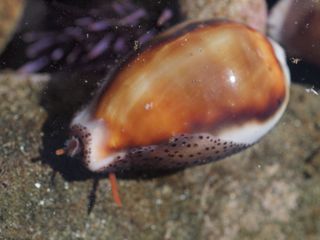
-
|
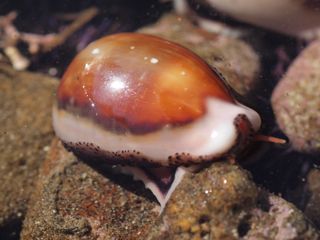
-
| 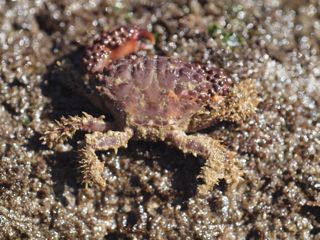
Lumpy rubble crab (Paraxanthias taylori)
| 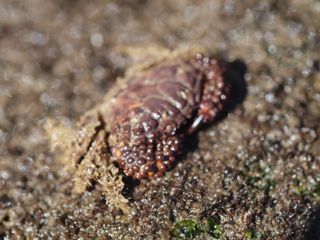
-
|
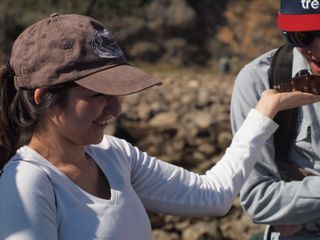
-
| 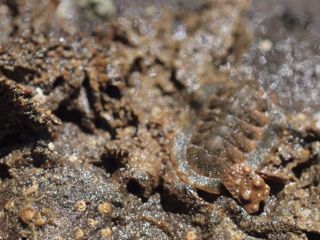
Lepidozona pectinulata
| 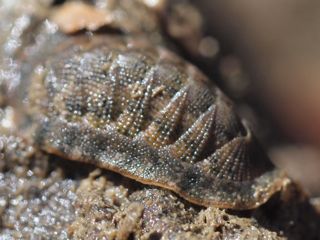
Lepidozona pectinulata
|
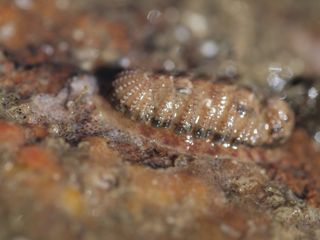
Callistochiton palmulatus
| 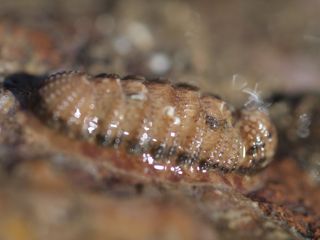
-
| 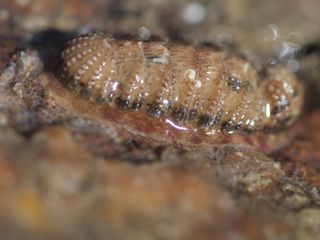
-
|
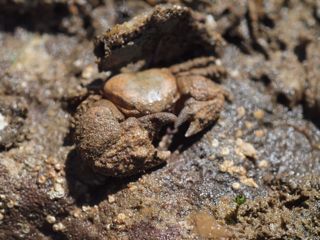
Pachycheles rudis (thick-clawed porcelain crab)
| 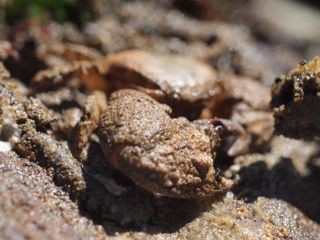
-
| 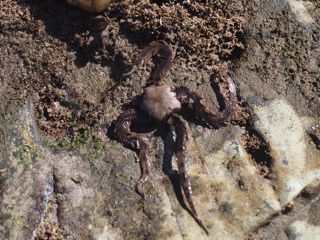
Ophiopterus papillosa (flat-spined brittle star)
|
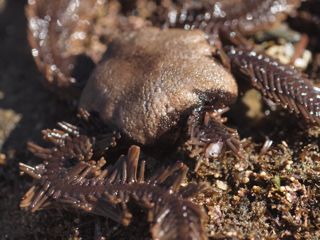
-
| 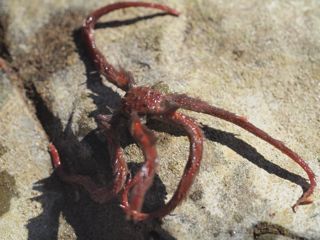
Ophiothrix spiculata (western spiny brittle star)
| 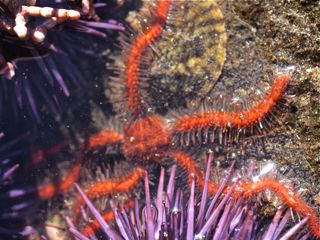
Ophiothrix spiculata
|
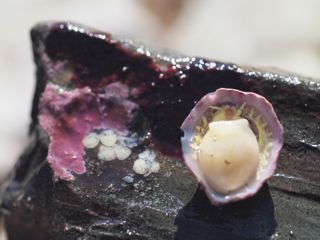
Half-slipper shell (Crepipatella lingulata)
| 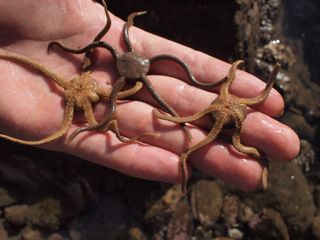
Smooth brittle star (Ophioplocus esmarki)
| 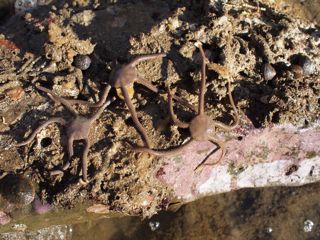
-
|
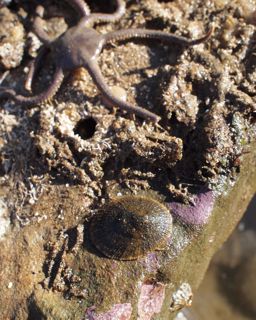
Lottia limatula (file limpet)
| 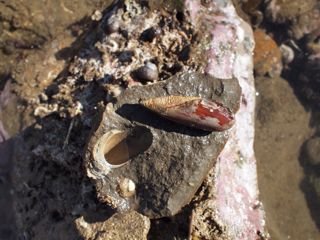
Date mussel (Lithophaga plumula) bores into soft shale and mollusk shells; very common
within rocks dredged from the subtidal (e.g., 25m depth).
| 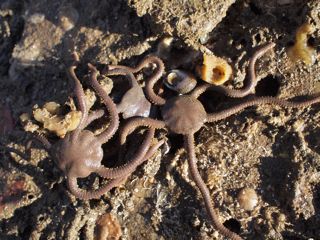
-
|
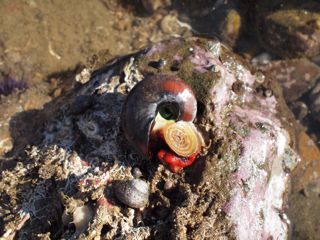
Top: Norris' top-shell (Norrisia norrisi); Bottom:
Western banded turban snail (Agathistoma eiseni; note sculpture of numerous evenly spaced spiral ridges that are coarsely beaded)
| 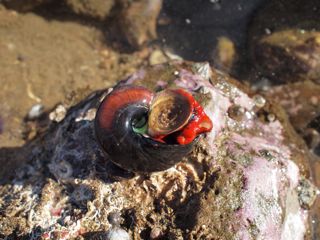
-
| 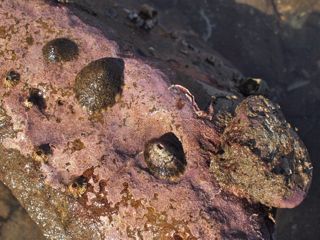
Top two: file limpet (Lottia limatula; Lottiidae); Bottom: volcano keyhole limpet (Fissurella volcano; Fissurellidae)
|
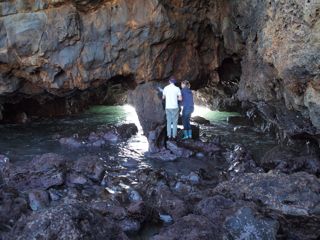
-
| 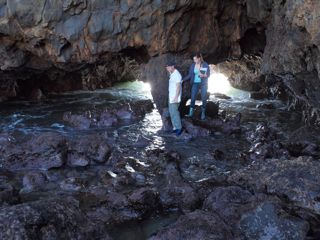
-
| 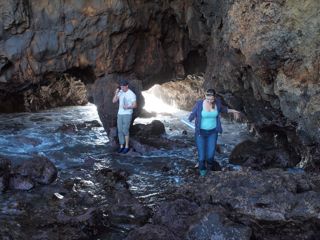
-
|
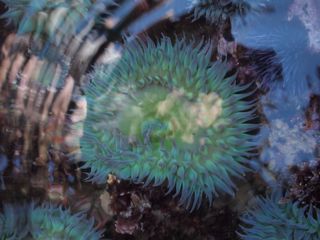
-
| 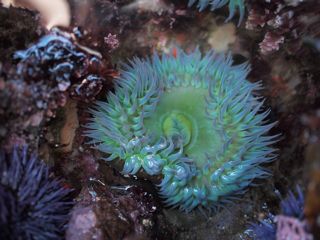
Giant green anemone (Anthopleura xanthogrammica)
| 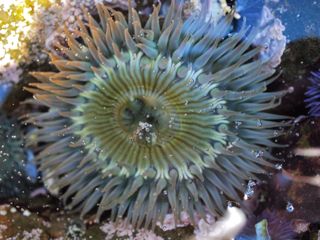
Sunburst anemone (Anthopleura sola)
|
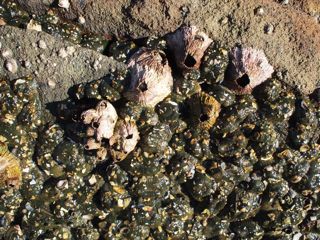
Aggregating anemone (Anthopleura elegantissima)
| 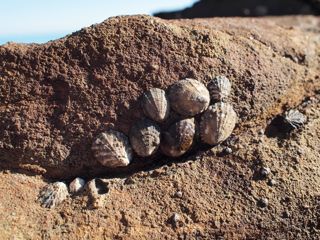
Rock ecomorph of southern finger limpet (Lottia austrodigitalis) above the crack;
two small rough limpets (L. scabra) below the crack
| 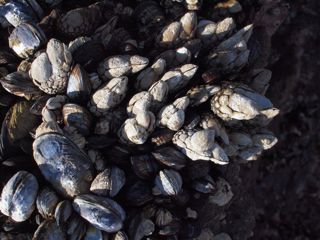
Barnacle ecomorph of southern finger limpet (Lottia austrodigitalis)
on gooseneck barnacles (Pollicipes polymerus)
|
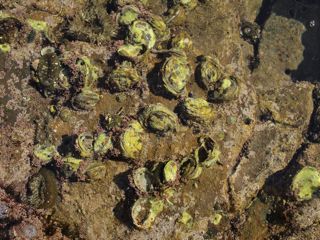
Pacific left-handed jewel box, or reversed Chama (Pseudochama exogyra) are attached on their
right valve, so the spiral line from the beak is clockwise; another member of the same family, Chamidae, is Chama arcana, but it is more normally
found in more protected habitats than this such as on shaded
pilings. C. arcana is attached on its left valve, so the spiral line is counterclockwise.
| 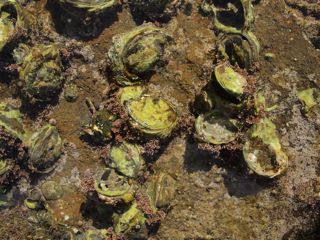
Most species of Chamidae are found
in tropical waters, so these southern California species are exceptional for living in a warm temperate region.
They look like oysters but belong to Heterodonta (the largest and most diverse group
of bivalves), not Pteriomorphia (includes not only oysters but also mussels and scallops). See here.
| 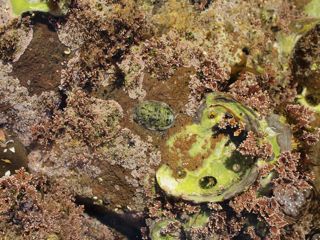
Hartweg's chiton (Cyanoplax hartwegii) is an oval-shaped chiton with a narrow, smooth appearing, girdle;
it normally has an olive coloration but can have black or white patterns as well. The limpet on the shell is most likely Lottia conus a more southern relative
of the similar appearing but larger L. scabra. Both co-occur from about Palos Verdes to northern Baja California. L. conus has finer and more regular radial ribs. The corallina
alga is possibly mostly Corallina vancouverensis.
See here for a useful guide to southern California coralline algae species.
|
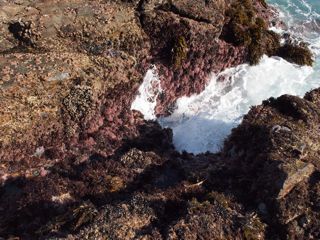
A low zone surge channel with some feather boa kelp, Egregia menziesii but really
dominated by coralline algae and other red algae, such as a red tentatively identified as Prionitis lanceolata.
See here.
| 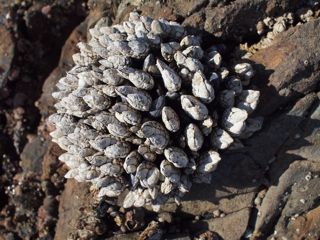
Gooseneck barnacles (Pollicipes polymerus) live in clusters in
surge channels -- they are passive suspension feeders, relying on the backwash of waves to bring them their food, which they grab with
their legs and chew with their jaws. Almost all barnacles are hermaphroditic and it is well known that acorn barnacles use their long
penis to copulate with their neighbors. However, it was only recently discovered that stalked barnacles, and this species
in particular, practice spermcasting, ejaculating their sperm into the ocean rather than copulating with their neighbors.
In fact, the penis if P. polymerus is quite short so it is difficult to imagine how they would be effective copulaters.
See Barazandeh et al., 2013.
| 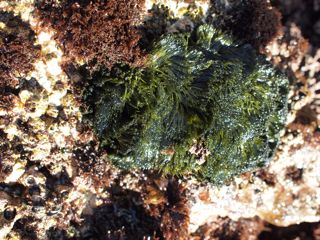
This green alga was identified as Bryopsis pennata var. minor J. Agardh
(Bryopsis pennatula in Abbott & Hollenberg) by Dr. Kathy Ann Miller from UC Berkeley's University Herbarium. She had seen it previously
in southern California only on San Nicolas Island and at Shaw's Cove in Orange County.
|
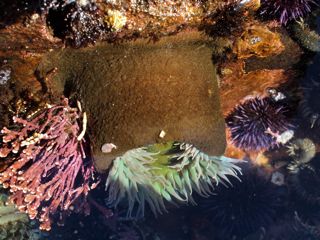
Giant green anemone (Anthopleura xanthogrammica)
| 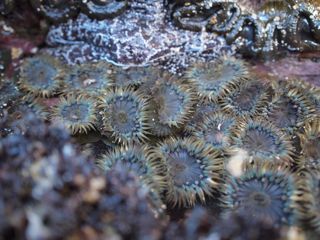
Aggregating anemone (Anthopleura elegantissima)
| 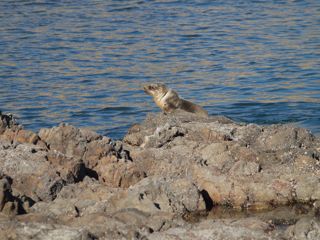
-
|
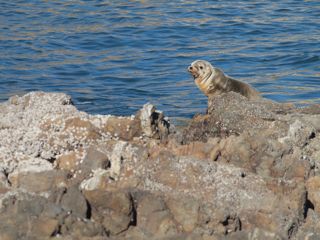
A California sea lion pup arrived when we were nearby on the rocky point.
| 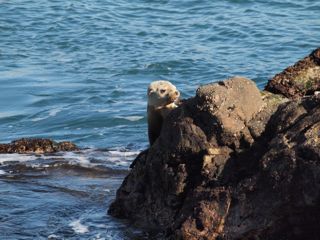
-
| 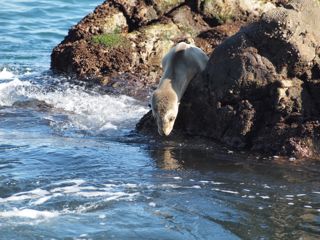
According to research by Biology 317 student Monique, newly weaned pups of this species
are often seen out of the water this time of year and it is important that they remain out of the water for extended periods.
See here (Thanks Monique).
|
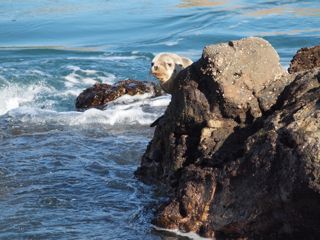
-
| 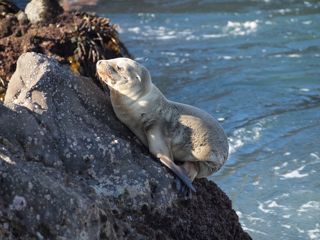
-
| 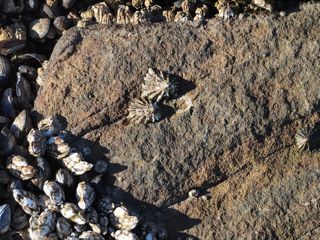
An owl limpet territory also occupied by these rough limpets (Lottia scabra, each in its home depression.
If the rock is soft enough they can dissolve it with acidic secretions aided by excavations with their iron-coated radular teeth.
If it is too hard for this they conform their shell growth to wedge themselves into natural cracks or depressions in the rock. Sitting down in their home depression
allows them to resist owl limpet aggression (owl limpets, not seen here, bulldoze other animals off their territory), and also they can avoid
being knocked off by the powerful bills of hungry shore birds.
|
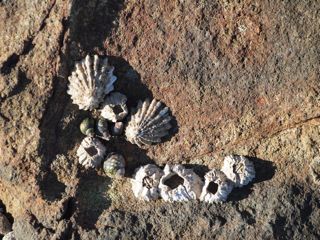
-
| 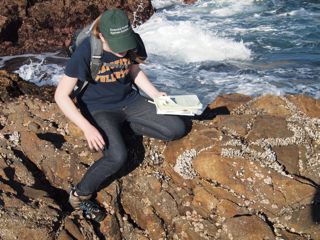
-
| 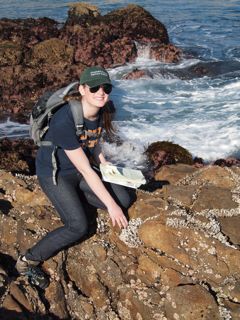
-
|
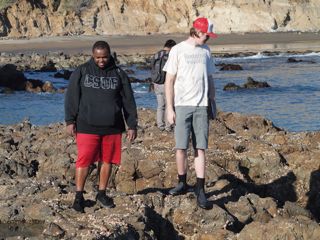
-
| 
-
| 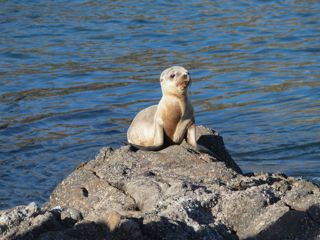
-
|
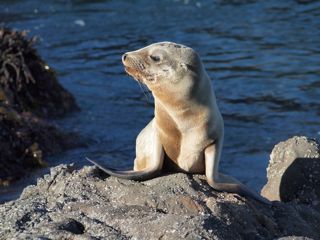
-
| 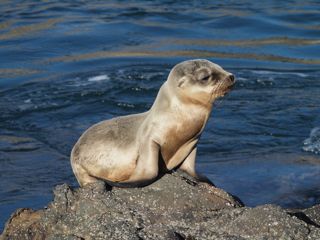
-
| 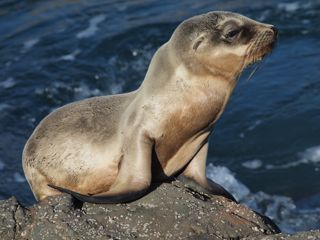
Besides this California sea lion pup, other marine mammals we saw were an adult harbor seal and some
dolphins (probably common dolphins) swimming nearby us in Smugglers Cove.
|
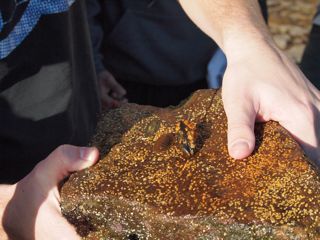
A chiton, Lepidozona pectinulata, and an Unidentified
flatworm on the underside of a rock
| 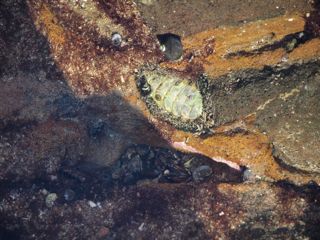
Mossy chiton, Mopalia muscosa).
| 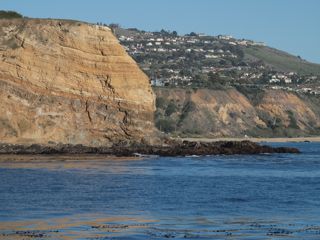
Looking south across Smugglers Cove to Inspiration Point
|
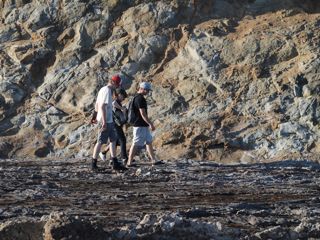
-
| 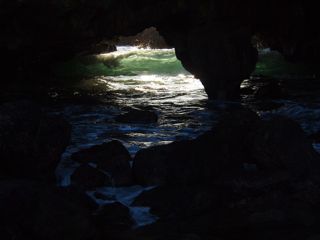
-
| 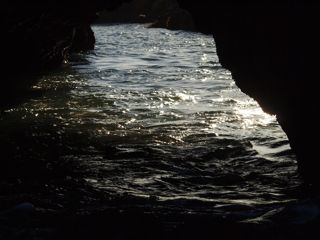
-
|
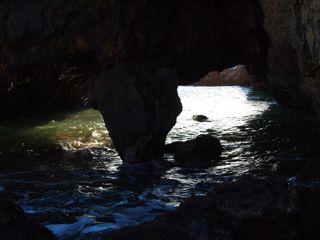
-
| 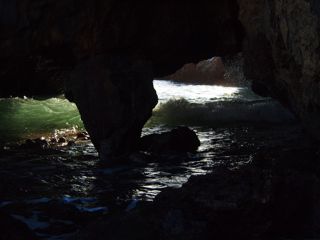
-
| 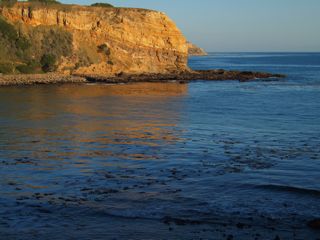
-
|
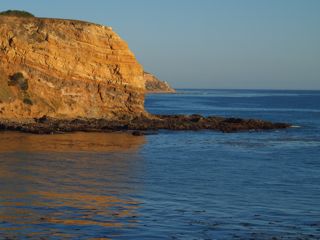
-
| 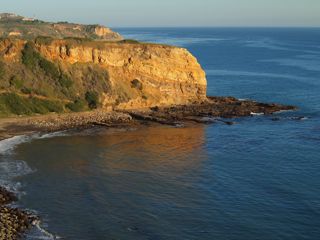
-
| 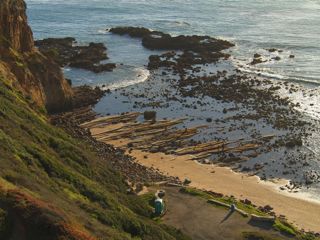
-
|
 Under Construction!
Under Construction! Under Construction!
Under Construction!